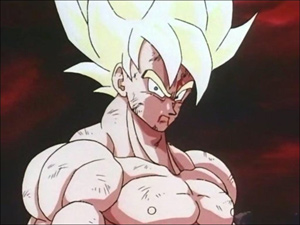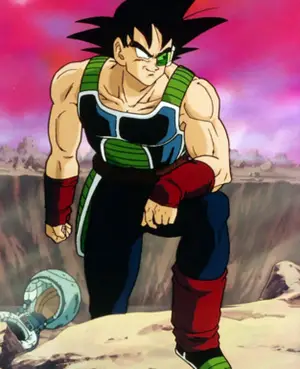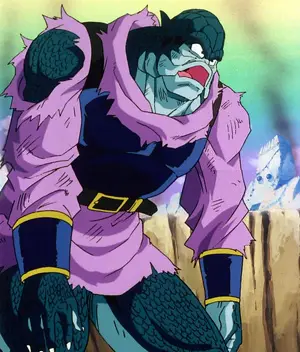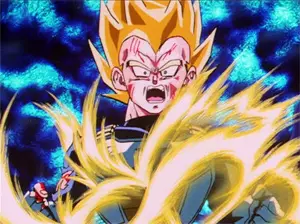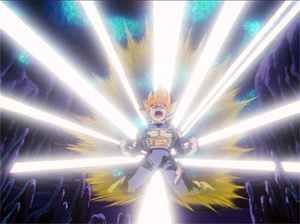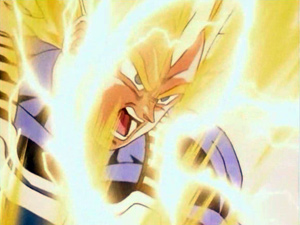Divine Combat – Zenkai Power
In this excerpt from The Dao of Dragon Ball we will learn more about the martial arts as depicted in Dragon Ball.
There are many concepts that are disclosed in this chapter, such as Qi (Ki), Gong, Divine Powers, and how the popular conception of Qi in the martial arts were employed by Akira Toriyama and mixed with traditional Buddhist and Daoist spiritual views.
This particular section of the Divine Combat chapter explains the concept of Zenkai Power, and what it means both within Dragon Ball and traditional cultivation practices of East Asia.
Zenkai Power
Zenkai is a term used by fans to refer to the sudden power up that occurs to a Saiyan after they recover from a near death experience. Saiyans are the only ones with the genetic potential for Zenkai, but anyone with Saiyan cells in their body is able to experience a Zenkai.
The Dragon World is one in which fighting and martial arts are the primary form of cultivation recognized and supported by the gods.
The Saiyans are primed for development in the Closed Fist style of cultivation. They learn by fighting and mature through physical conflict. They do not study a set of teachings, nor do they specifically try to improve their character through looking inward and letting go of attachments. They increase their power as they train with intensity and fight against increasingly difficult external opponents. Yet they sometimes experience mortal blows; the type that would kill a normal man. Upon recovering from these grievous wounds the Saiyan is instilled with even more power, so that they can then defeat their opponent the next time they do battle. It is an accelerated form of evolutionary adaptation, and a large part of what makes them such formidable opponents.
Dragon Ball fans translated Zenkai as “Complete Recovery.” But this translation is incorrect, and there are further meanings to this term within Asian culture, Buddhism and the martial arts.
Ancient legends about the history of acupuncture state that it was discovered in India by warriors on the battlefield. The wounds and aches they experienced before or during the battle were remedied by the accidental puncture of certain spots on their body. After the battle was complete their original ailments were gone, although they may have had new problems to deal with. From the revelation that adjustments in one part of the body can affect another came the physical science of massage, acupuncture, bone adjustments, tendon manipulation, and energy theories. Combined with Indian Ayurvedic (“Longevity Science”) principles and passed along to China these theories and teachings (that are rooted in the Five Elements) became the ground work for Shaolin School and Dao School internal energy treatments and Traditional Chinese Medicine.
In a medical practice the manipulation of passes and acupuncture points would be a gradual process of opening and flushing out stagnant Chi. Martial arts focused stories have to be more viscerally entertaining. In these stories the practitioner gains new powers when someone else suddenly strikes an acupuncture point and unwittingly unlocks the energy from within. Presuming they survive.
In Dragon Ball this concept is taken to an extreme. With each successive near death experience another portion of the previously untapped energy becomes accessible. After they have recovered from their wounds the energy bursts forth in a wave of incredible might in their next battle.
Vegeta first discovered this ability after his defeat against Goku. He fought Goku with a battle power of 18,000, returned home, recovered from his wounds, and shot up to approximately 24,000 for his battle on Planet Namek. He powered up again after his defeat by Zarbon and once again by Recoome. Vegeta then purposefully manipulated this ability in order to have enough power to defeat Lord Freeza. He ordered Krillin to blast a hole through his body with an energy beam so that he could be healed by Dende, a Namek healer, and receive yet another boost.
Goku had experienced this transformation process throughout his life, as at the end of each near death defeat he would recover and become stronger than he was before; although this was also due to training and further insights gained by experience. Goku used this inborn ability while training in the Space Capsule on his way to Planet Namek. He physically pushed himself to the point of breaking and then ate a Senzu bean and completely recovered. He repeated this cycle twice. Once he completed his training and arrived on Namek he had unlocked many profound supernormal abilities, including the ability to read other people’s minds and scan a person’s history through post-cognition.
As mentioned earlier, it is also possible that a strike to an acupuncture point could be used to unlock a dormant supernormal ability. This occurred to Goku’s true father, Bardock, while he fought on Planet Kanassa.
A Kanassan warrior purposefully finger strikes Bardock in the acupuncture point at the base of the skull where the spinal column meets the head, in the back of the neck. Traditional Chinese Medicine refers to this acupuncture point as Governing Vessel 15, (Chinese: ??, Ya Men). Ya Men translates as “Mute Gate” and is associated with the occipital lobe and visual cortex. Deep penetration of this area is usually prohibited in medical practice. The intense martial strike unlocked Bardock’s supernormal ability of pre-cognition.
The Kanassan’s were renowned for their psychic abilities, and the warriors final words were, “I have given it to you as a gift, Bardock, so that you can see.” Bardock replies, “See what?” “See the horror of your end, just as we had to.” Through his pre-cognitive visions Bardock was shown the genocide of the Saiyan people and images of his own demise. In a confused and altered state he was also able to see the future of his son Kakarot’s rise to power and eventual conflict with Lord Freeza.
In an attempt to rewrite the future Bardock single handedly opposed Lord Freeza and his men. He attempted to explain to his Saiyan brothers of their impending doom, but they would not listen. Meanwhile, his son had just been launched into outer space. With the thoughts of his own people on his mind, he fought against Freeza. But at the final moment of his death he realized that his visions were all too true, including the path of redemption he just chose to follow. Even his attempt to change the future was pre-written.
The Kanassan warrior’s method of imparting the truth to Bardock was not through words, because he knew that words would not be accepted by such a person. Instead he unlocked his mind through a silent strike to the Mute Gate. The prophetic visions taught Bardock the ramifications of cause and effect, and that one’s life is already written. These visions shook him to the core, but at the moment of his death brought him peace, for he saw the balancing of debts enacted through his own son.
Truly, when a practitioner lives the present moment of their own future it can hit their heart like a dagger in the mind. They awaken to a reality they never knew. It brings both shock and calm, and the revelation that it is okay to let go, for we are not in control.
Fire Through a Pass
The common literal translation of the word Zen Kai (Japanese: ??, Chinese: Chuan Guan) is “Complete Open,” with looser translations meaning, “Perfectly Opened,” “Full Throttle,” and more-or-less, “To the Limit.” But this common translation ignores the cultural heritage of the Chinese characters.
The etymology of the Zen (?) ideogram shows the character for “earth” (?) with the character for “one” or “finger” (?) connected above it. Together this character represents a “king,” or more literally a person with their “finger above the earth.” Above this combined character is the character for [a man] “enters” or “receives” (?). Altogether Zen can mean “The one who receives and resides over the earth.”
Kai (?) displays a “fire that can be handled” (?) passing through a “gate” or “pass” (?). Zen Kai thus means “a fire that moves through a pass.”
When the term is used in Zen (?) Buddhism it refers to the concept of enlightenment: The complete opening of one’s mind to wisdom. Zen Buddhism is a wordless practice and is often associated with the martial arts because of the Closed Fist teachings of Buddha Shakyamuni. In this sense Zen Kai (??) refers to a wordless opening derived through experiential practice via the path of the fist. Because Zen focuses on Sudden Enlightenment this further implies that the Zen Kai will occur suddenly and be gained without studying words. It is a wordless form of opening the gates. The gates are not opened through a cerebral key. They are opened through a physical key.
The Dao School considers the human body to be a small universe, with many important energy channels and points, which they refer to as “apertures.” The human body has many layers. The layer we can see with our flesh eyes is composed of cells, and these cells are composed of molecules and further composed of atoms. Each is a layer of dimension. Teacher Li Hongzhi of the Falun Dafa practice says in Zhuan Falun (1999) that “There is a gate placed at each layer of atoms, protons, electrons, the very microscopic particles, the infinitesimal microscopic particles, and from the infinitely microscopic particles down to the extremely infinite microscopic particles. Therefore, there are numerous supernormal abilities and many special capabilities locked up inside the gates of different layers.”
When a practitioner is about to attain enlightenment at their cultivated level, the energy they have developed will suddenly arise. The gates at each level will open up with a bang, from the smallest to the largest, and the energy will flow through. All of the supernormal abilities will be unlocked and what they have developed will come to fruition.
At the moment of enlightenment the energy in the microcosm will appear to surge through the layers of the body like a rising fire. Contrarily it can also be likened to waves of pressurized water flowing through flood gates at a rapid pace. Beginning at the utmost microcosm of the practitioner’s fundamental being the energy will begin to rise, from the smallest particles to the largest, each particle will be tapped into and the energy inside will add more fuel to the fire. The energy will pass through the gates and reach the surface where it will explode outward in all directions like the radiating light of a star or a raging fireball.
Artwork that depicts the gods will often show their central figure surrounded by light, flames, or a heavenly aura. Western art and literature refers to this as a nimbus. The character will be larger than life and surrounded by this fully realized energy. They will stand or sit inside a circle, a door or gate, amidst a courtyard of their paradise or a heavenly scene, amidst all of the people within their paradise or heavenly kingdom.
Qi Gong teachings state that everyday people have a feint electrical circuit and a small aura, but that it is weak. A practitioner’s aura is strong and refined, and its color represents the practitioner’s level at different dimensions. Some are red, yellow, orange, green, blue, gold, purple, white, colored, or even colorless. The stronger a practitioner’s energy, the greater the influence of an aura and the wider its area of effect. A righteous practice will be aligned with the characteristics of the universe and a practitioner of a righteous way will bring an honest, kind and patient energy with them wherever they go. An evil practice aligned with an inverse of universal characteristics will likewise bring with it such energy.
There is also the concept of Genkai (Japanese: ??). Genkai means a “limit.” And to “break the limit” means to go beyond ones current restraints. The first character gen (?) implies a limit, while the second character kai (?) shows a field, and often means “boundary”, “domain” or “world.” Together, Genkai refers to a limit within a particular field. A field means a constraint of time and space. In cultivation a practitioner attempts to continually break their own limits. Once that constraint of time and space has been broken the practitioner will enter a new field. They then go even further beyond what was previously considered further beyond.
With great effort a practitioner of martial arts cultivation or internal cultivation can bring the energy (so far attained) up to the surface during their cultivation process. They can temporarily open the gates and summon the energy from their bodies in every dimension at every level (molecular, atomic, sub-atomic, all the way down and all the way up). The energy will reach the surface of this body and surround them with a material substance that radiates light. Internal practices such as Aikido or TaiJi use this field of energy to sense the subtle movements of opponents within their field, or to attack and defend with supernormal abilities unseen by the naked eye.
In Dragon Ball the aura’s of the characters flare like fireballs that cycle according to the internal frequency of the rotating energy within the practitioner’s channels. There are layers of aura within the layers, and each moves according to its own frequency. Their fiery visage appears exactly like the Vajrapani Warrior Guardians of the Buddha, surrounded by flaming aura’s who wield the Vajra lightning bolts and fight using divine martial arts.
